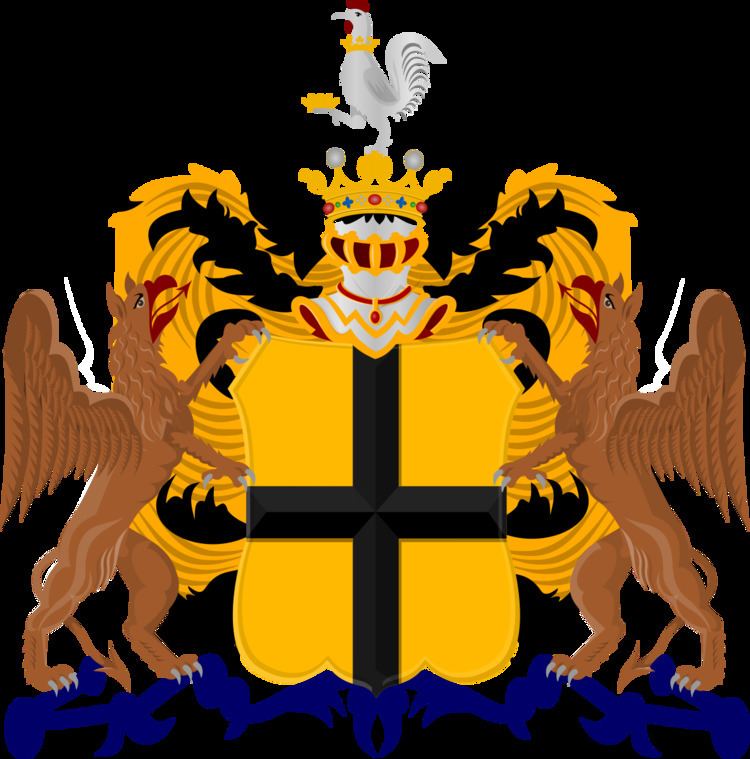Founded 13th century Ethnicity Dutch, German | Titles count, baron Founder Wilhelmus dictus Doys | |
 | ||
Cadet branches Bylandt-WellBylandt-RheydtBylandt-Halt-Spaldorf | ||
The House of Bylandt is the name of an ancient house of nobility originating in the Lower Rhine region. It later split into the cadet branches of Bylandt-Well, Bylandt-Rheydt and Bylandt-Halt-Spaldorf.
Contents
History
The first tracable ancestors of the house of Bylandt were known by the name of Doys, and were already noble ("Uradel"). The first documented member of this name is Wilhelmus dictus Doys (1260) who died in the Battle of Worringen. Doys is mentioned in 1275 as being the owner of Castle Scate, then a fiefdom of the Counts (and later Dukes) of Cleves. Doys son Dietrich became the first person to use "de Bylandt" as his house name (1294). From then on all descendants used the name Bylandt. Following that period, the Bylandt family became steadily more powerful and acquired vast amounts of land. The title Marshal of the County of Cleves also stayed in the family for a long time. In 1500, the three cadet branches formed. The first branch, Bylandt-Well, became the owners of Gut in Geldern but soon died out. The second, Bylandt-Rheydt, inherited Rheydt, later calling themselves Baron of Rheydt, and gained control of much land, including land in Austria, the Netherlands and Germany. They were later granted the title of Freiherr. The third cadet branch, Bylandt-Halt-Spaldorf, gained control of the Castles of Halt and Spaldorf in Westphalia and also became Freiherren.
Famous scions
Coat of arms
Shield: in gold a black cross. This coat of arms is depicted in the medieval Gelre Armorial (folio 90r).
